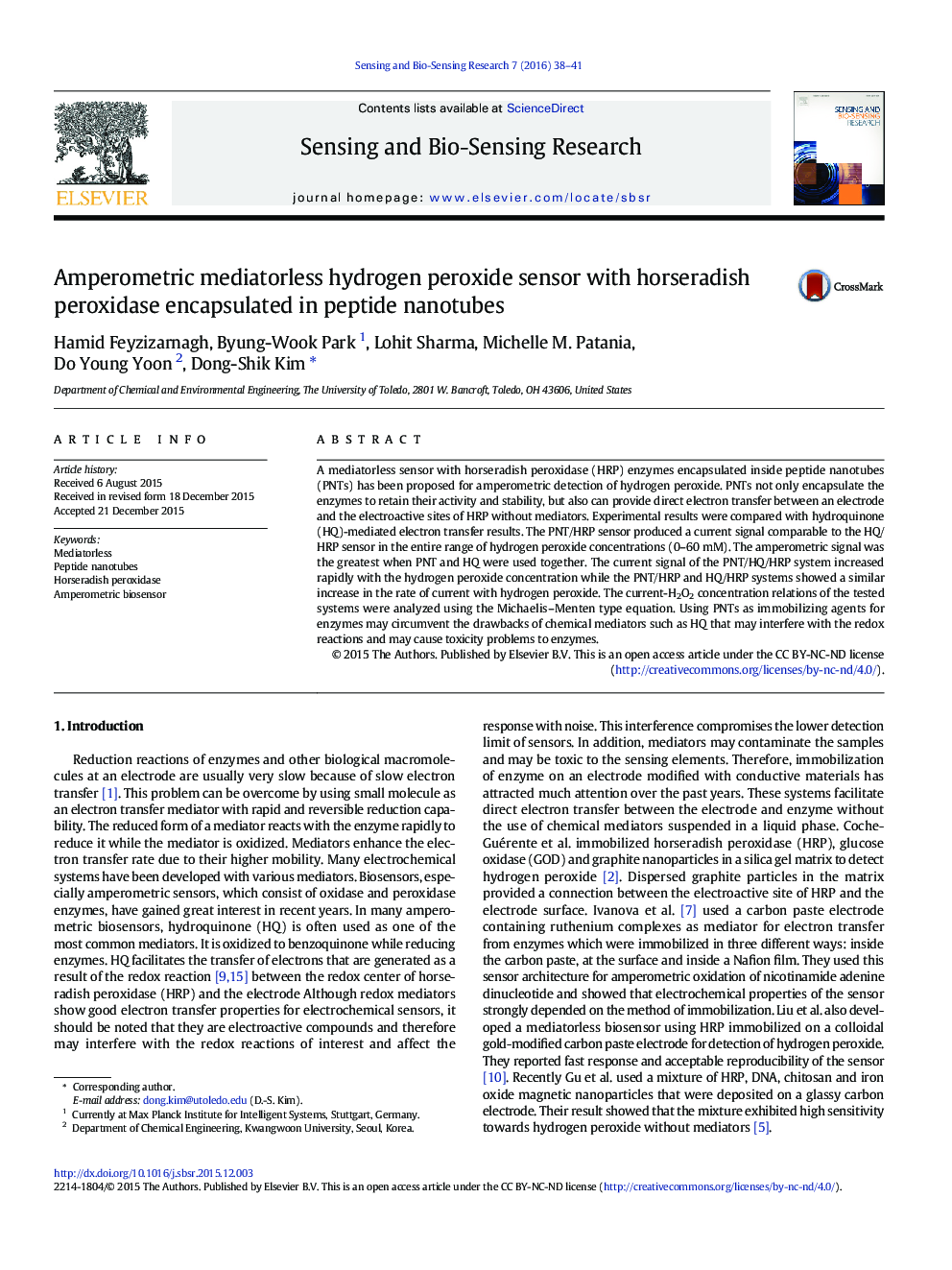| Article ID | Journal | Published Year | Pages | File Type |
|---|---|---|---|---|
| 807361 | Sensing and Bio-Sensing Research | 2016 | 4 Pages |
•A mediatorless H2O2 sensor with HRP encapsulated inside peptide nanotubes has been proposed.•Peptide nanotubes were used to encapsulate HRP and also to facilitate direct electron transfer.•The PNT/HRP sensor produced a signal comparable to the HQ/HRP.
A mediatorless sensor with horseradish peroxidase (HRP) enzymes encapsulated inside peptide nanotubes (PNTs) has been proposed for amperometric detection of hydrogen peroxide. PNTs not only encapsulate the enzymes to retain their activity and stability, but also can provide direct electron transfer between an electrode and the electroactive sites of HRP without mediators. Experimental results were compared with hydroquinone (HQ)-mediated electron transfer results. The PNT/HRP sensor produced a current signal comparable to the HQ/HRP sensor in the entire range of hydrogen peroxide concentrations (0–60 mM). The amperometric signal was the greatest when PNT and HQ were used together. The current signal of the PNT/HQ/HRP system increased rapidly with the hydrogen peroxide concentration while the PNT/HRP and HQ/HRP systems showed a similar increase in the rate of current with hydrogen peroxide. The current-H2O2 concentration relations of the tested systems were analyzed using the Michaelis–Menten type equation. Using PNTs as immobilizing agents for enzymes may circumvent the drawbacks of chemical mediators such as HQ that may interfere with the redox reactions and may cause toxicity problems to enzymes.
